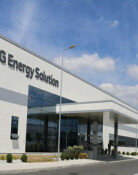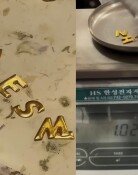Samsung, SK hynix pay highest corporate taxes among chip makers
Samsung, SK hynix pay highest corporate taxes among chip makers
Posted December. 24, 2022 09:14,
Updated December. 24, 2022 09:14
Samsung Electronics and SK hynix pay the highest corporate taxes compared to other top 100 global chip makers, including TSMC of Taiwan, Intel of the U.S., and SMIC of China.
The Dong-A Ilbo and the Federation of Korean Industries analyzed last year’s business indicators of the global top 100 semiconductor companies by market capitalization. They found that the effective corporate tax rates of Samsung Electronics and SK hynix recorded 25.2% and 28.3% last year, respectively. The effective tax rate can be found by dividing the tax expense by the earnings before tax of a company.
TSMC, the world's No. 1 foundry, only paid 10 percent for corporate taxes. For Intel, it was 8.5 percent, and for SMIC, 3.5 percent. Micron of the U.S., which ranks third after Samsung Electronics and SK hynix in memory chip manufacturing, paid 7.1 percent.
Sometimes, Korean companies paid more corporate taxes even though the sizes of their sales were small. At the end of last year, SK hynix's annual sales were 36.097 billion U.S. dollars. It was half of TSMC's 57.28 billion dollars and Intel's 79.02 billion dollars. However, SK hynix paid 3.19 billion dollars in corporate tax, 33.8% and 73.8% higher than TSMC (2.38 billion dollars) and Intel (1.8 billion dollars), respectively. SMIC paid 65.2 million dollars in corporate tax last year.
The Korean chip industry is concerned about losing its competitiveness as countries of competitors are scrambling to offer unprecedented tax benefits to foster their semiconductor industries. In contrast, Korea is instead going backward even with its initial policies.
On the same day, the ruling and opposition parties agreed on a revision to the Restriction of Special Taxation Act, which calls for increasing tax deductions for facility investments of large chip makers from 6 percent to 8 percent. This is a significant step back from the previous discussion of 20 percent (ruling party) and 10 percent (opposition party). On the other hand, the U.S. and Taiwan have already passed or are pushing for a tax credit of up to 25% for investment in semiconductor facilities.
beepark@donga.com · kootg@donga.com



![‘치매머니 사냥’ 요양원의 비극…701호 동생, 702호 아들에 뜯겨[히어로콘텐츠/헌트③-上]](https://dimg.donga.com/c/138/175/90/1/wps/NEWS/IMAGE/2025/12/16/132980393.1.jpg)

![요양원 321곳 중 85곳 “치매발병후 기초수급자 전락 사례 있어”[히어로콘텐츠/헌트③-下]](https://dimg.donga.com/c/138/175/90/1/wps/NEWS/IMAGE/2025/12/16/132980397.1.jpg)

